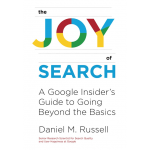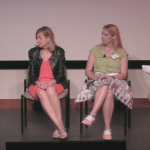Remember that the SearchResearch Challenge this week is to figure out how to make an interactive widget that can interactively show the relationship between height and visible distance in the “island viewing” problem. That is:
1. Can you make an interactive widget that illustrates “how far out to sea can you see” without going into full-developer mode and writing a bunch of HTML, CSS, and Javascript?
The comments from the last week have been pretty helpful, but nobody’s got a solution yet. It’s possible that there isn’t a good solution (that is, without going fully into HTML/Javascript), but we’re tantalizingly close!
One thing I found that helped was to use somewhat different search terms.
I found a lot of interesting tools by searching like this:
[ interactive animation tools ]
or
[ interactive tool for physics animations ]
How did I come up with these search terms? Easy. I just described what I was looking for to a friend. As I “translated” what was in the SRS post into everyday speech, I realized that I wasn’t searching for a way to “build a widget,” but I was looking to find a way to build an interactive animation.
You know, it’s funny to think about this because… once upon a time… this was simple to do in Apple’s now-defunct scripting tool, Hypercard. (Here’s a longish demo of Hypercard.) Of course, this was in pre-WWW days, but thousands of teachers were able to easily create content — including interactive animations to illustrate physics.
In any case, let’s keep on this task for the rest of this week.
I’ll pop back in on Wednesday with an update on how I’m doing.
Keep searching!
—–
I’m repeating the statement of what the widget should look like below…
To get you started, here’s a side-by-side sketch of what such a widget might look like. In the first image, the observer’s eye is 1.7 meters above the beach, which lets the observer see 4.7 km out to the visible horizon.
The interaction is simple: As you drag the red dot up, the value of the “height above the beach” changes. In this image, it’s 100m. You can drag it down to 0, or up to a much higher number. As you drag, the widget updates the “visible distance” number as you drag, and redraws the red line to touch a point on the circle (in this case, one that is 36 km out).
In this next image, I’ve dragged it down a bit. Here it’s just 1.7 meters above the beach, and the red dotted line only goes out 4.7 km. As I drag the dot, the numbers should update, the line to the dot should move up and down, and the line to the point on the circumference of the circle should slide along to show the distance.
NOTE: These are sketches of what the widget might look like. They’re NOT images from a working widget.
The formula connecting these two variables look like this:
distance = 3.7 * (height ^ 0.5)
where height is in meters, and distance is in kilometers. (In the top example, since the height is 100m, the square root of 100 is 10. Hence, 10 * 3.7 = 37 km.)






